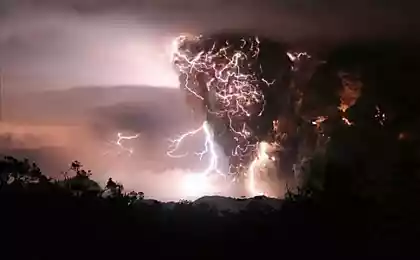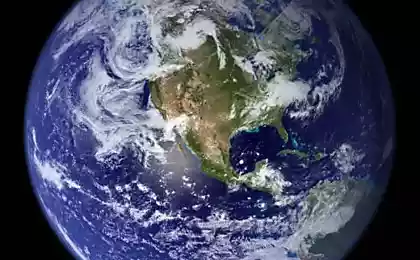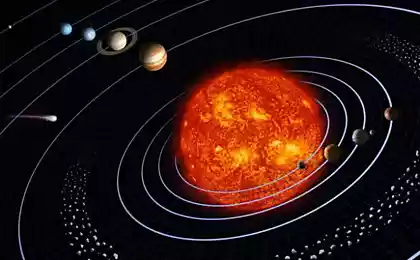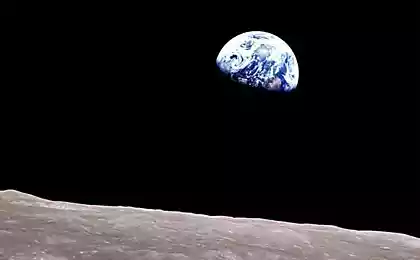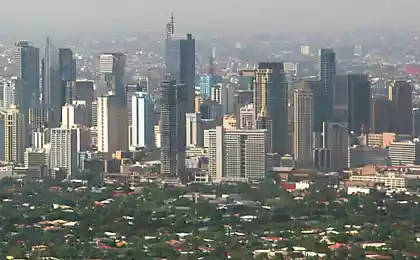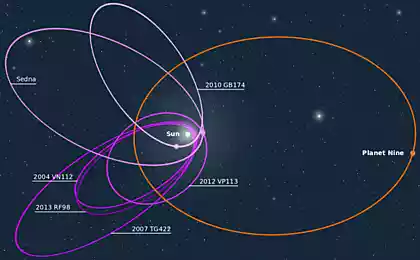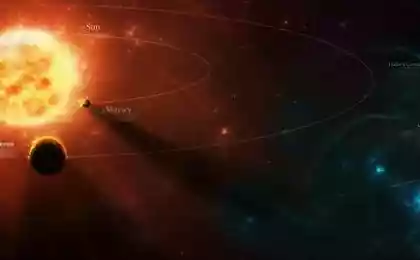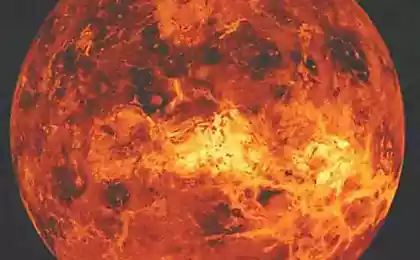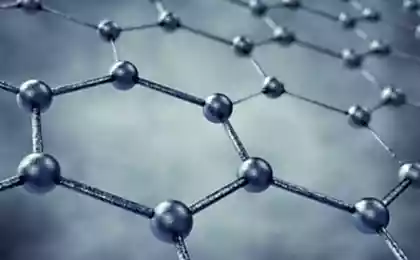649
Amazing places on our planet
11 photos via mindhobby.com
1. Bloody hot lake (Japan)
In Japan, there are several such places that the Japanese themselves called hell, and so swimming is not recommended. On this show is enough to look at, it's worth it ... All these lakes are located in the city of Beppu (Beppu), the water in them has a bright red color, due to the high concentration of salts of iron, and the temperature reaches 90 degrees Celsius.
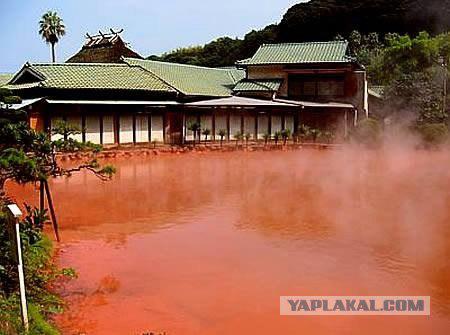
2. Dry Valley (Dry Valleys), Antarctica
Dry rocky surface, low ambient temperatures, high winds, which can reach speeds of 300 km / h - it's Antarctica. Strong wind blows the water from the smallest crevices and humidity here is one of the lowest in the world. There is almost never snows, and the rare lake turned into a multimeter ice wells, under which, scientists believe, is very salty water, inhabited by unusual organisms waiting to be discovered. If you do not know what this Earth, you might think that you are on Mars.
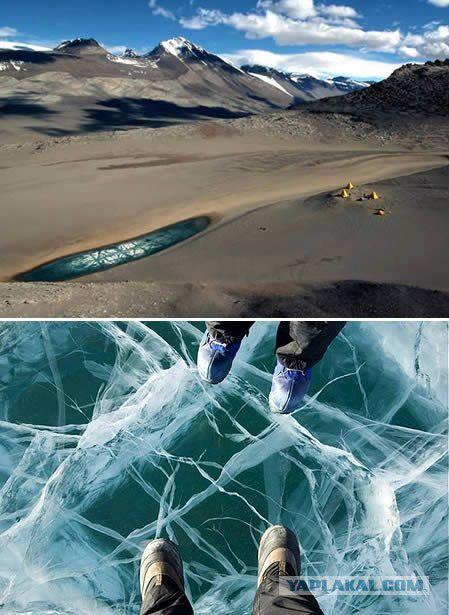
3. Socotra Island, Indian Ocean
Forms on the island can be a maddening any naturalist, change his idea of "trees", "bush" and other animals. It's really an unearthly landscape, resulting in an isolated island, which is separated from Africa millions of years ago. Like the Galapagos Islands, there is found more than 700 rare species of animals and plants, of which over a third are not present. The climate is hot and dry, so the trees have to get out and store moisture for a long time, which leads to their bizarre form. And some kinds of them are already at least 20 million years.
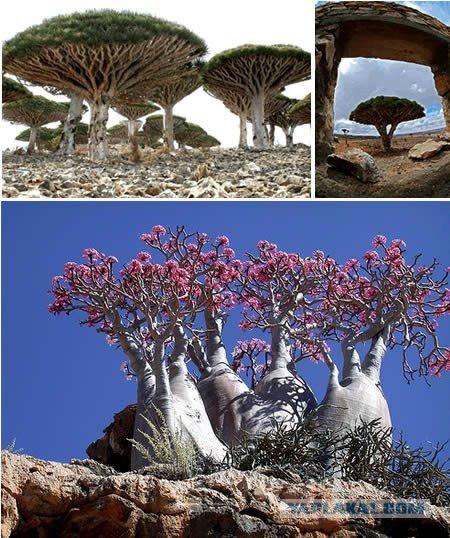
4. The river Rio Tinto, Spain
Giant open development led to a surreal landscape, among which at one time employed a large number of people. There were even specially built towns around the area for work. Now, as I understand it, the work is not carried out, and the river carries its waters freely poisonous colors, because of the high acidity (pH & lt; 2.5) and a large number of heavy metal impurities.

5. Spotted Lake (Kliluk), Spotted Lake, Canada
Under the hot summer sun, the water evaporates from the lake, exposing islands, rich in various minerals, forming a variety of rounded shapes. Their color ranges from blue to green, which is explained by one of the highest concentrations of minerals in water. Among them, magnesium sulfate, calcium, sodium, and other substances, such as silver and titanium. Locals use the mud and water from the lake for the treatment of diseases, as well as pottery.

6. Vale Da Lua (Brazil)
Vale Da Lua name is translated as Moonlight Avenue, and is a stone formation, washed with water, with natural pools, caves and hills, with a river flowing through the territory. All of this is located in the Brazilian savannah, near the town of Chapada (Chapada) 38 kilometers from the Alto Paraíso de Goiás. These stone labyrinths - one of the oldest on the planet, and is almost entirely composed of quartz ore.
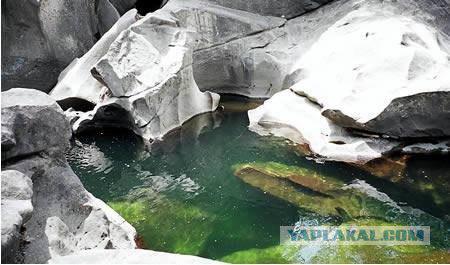
7. Stone Forest (China)
In Chinese it's called Shilin (Shilin), and is a wonderful example of the impact of precipitation on the rock. Stones in the forest made up of limestone, and their shape is caused by the flow of water at the base, which washes away the rock, leaving only the tall columns, like trees. This place is known since the time of the Ming Dynasty, that is more than 500 years ago.
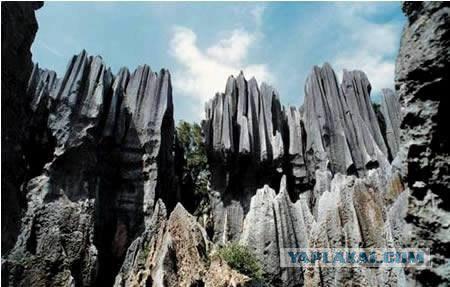
8. Richat (Mauritania)
It is an unusual geological formation in the southwestern part of the Sahara Desert, has a diameter of more than 50 kilometers away and visible from space. Scientists suggest that this round was formed colorful playground because of the impact of an asteroid, there is also a view that this is the work of nature, that is, the constant erosion, raising and lowering of the soil. Why is it round - neither one nor the other does not know the exact answer.
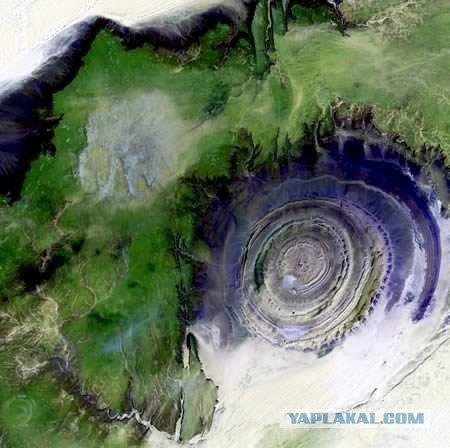
9. Cave Eisriesenwelt (Austria)
Ice Caves are usually distinguished by its atmosphere from conventional, inside you have the feeling that you get to another planet ... In the world there are many ice caves, but the caves Eisriesenwelt is the largest known to man. Nestled in the mountains near Salzburg, Tennengebirge, they stretch for over 40 kilometers, but only a small part of them is open to visitors. However, and this is enough to like respect for Mother Nature.
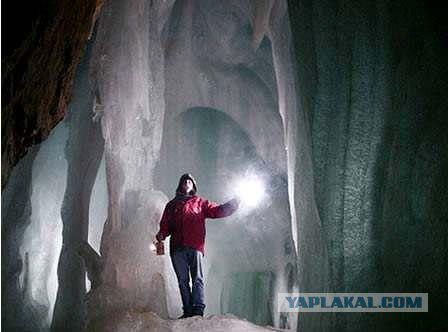
10. Cerro Piedra Bola (Mexico)
It could be an ordinary timber, if it were not scattered around boulders round shape, similar to the toy giant. Their diameter ranges from 0.6 to 3.5 meters, and it is believed that they are at least 20 million years. How did these "balls" is not precisely known, but consist mainly of very hard types of stone, such as granite. Opponents believe that this is an artificial entity, since the probability of influence on this process of erosion is negligible, and it is difficult to explain their almost circular shape. Perhaps GDSs, then they were at the bottom of the ocean under the influence of strong currents?

11. Salar de Uyuni (Bolivia)
One of the most impressive landscapes among presented, Salar de Uyuni is the largest salt desert accommodating the active volcanoes, cactus forests, hot geysers, etc. This area was formed on the site of a dried-up 40 thousand years ago, a giant lake, and now it is surrounded on all sides by two modern salt lakes and two deserts. The area of Salar de Uyuni is more than 10,000 square kilometers, and contains, according to rough estimates, about 10 billion tons of salt, of which the annual production of 25 thousand tons. Surprisingly, there are found a variety of animals and birds, including three species of flamingos. And finally I want to add that in the depths of this desert is half the world's reserves of lithium - a material that is a necessary component for the production of advanced batteries, fuel your phone / iPod / Laptop / add your own version.
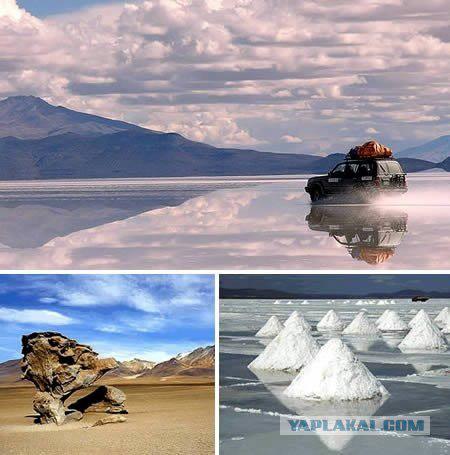
Source:
1. Bloody hot lake (Japan)
In Japan, there are several such places that the Japanese themselves called hell, and so swimming is not recommended. On this show is enough to look at, it's worth it ... All these lakes are located in the city of Beppu (Beppu), the water in them has a bright red color, due to the high concentration of salts of iron, and the temperature reaches 90 degrees Celsius.

2. Dry Valley (Dry Valleys), Antarctica
Dry rocky surface, low ambient temperatures, high winds, which can reach speeds of 300 km / h - it's Antarctica. Strong wind blows the water from the smallest crevices and humidity here is one of the lowest in the world. There is almost never snows, and the rare lake turned into a multimeter ice wells, under which, scientists believe, is very salty water, inhabited by unusual organisms waiting to be discovered. If you do not know what this Earth, you might think that you are on Mars.

3. Socotra Island, Indian Ocean
Forms on the island can be a maddening any naturalist, change his idea of "trees", "bush" and other animals. It's really an unearthly landscape, resulting in an isolated island, which is separated from Africa millions of years ago. Like the Galapagos Islands, there is found more than 700 rare species of animals and plants, of which over a third are not present. The climate is hot and dry, so the trees have to get out and store moisture for a long time, which leads to their bizarre form. And some kinds of them are already at least 20 million years.

4. The river Rio Tinto, Spain
Giant open development led to a surreal landscape, among which at one time employed a large number of people. There were even specially built towns around the area for work. Now, as I understand it, the work is not carried out, and the river carries its waters freely poisonous colors, because of the high acidity (pH & lt; 2.5) and a large number of heavy metal impurities.

5. Spotted Lake (Kliluk), Spotted Lake, Canada
Under the hot summer sun, the water evaporates from the lake, exposing islands, rich in various minerals, forming a variety of rounded shapes. Their color ranges from blue to green, which is explained by one of the highest concentrations of minerals in water. Among them, magnesium sulfate, calcium, sodium, and other substances, such as silver and titanium. Locals use the mud and water from the lake for the treatment of diseases, as well as pottery.

6. Vale Da Lua (Brazil)
Vale Da Lua name is translated as Moonlight Avenue, and is a stone formation, washed with water, with natural pools, caves and hills, with a river flowing through the territory. All of this is located in the Brazilian savannah, near the town of Chapada (Chapada) 38 kilometers from the Alto Paraíso de Goiás. These stone labyrinths - one of the oldest on the planet, and is almost entirely composed of quartz ore.

7. Stone Forest (China)
In Chinese it's called Shilin (Shilin), and is a wonderful example of the impact of precipitation on the rock. Stones in the forest made up of limestone, and their shape is caused by the flow of water at the base, which washes away the rock, leaving only the tall columns, like trees. This place is known since the time of the Ming Dynasty, that is more than 500 years ago.

8. Richat (Mauritania)
It is an unusual geological formation in the southwestern part of the Sahara Desert, has a diameter of more than 50 kilometers away and visible from space. Scientists suggest that this round was formed colorful playground because of the impact of an asteroid, there is also a view that this is the work of nature, that is, the constant erosion, raising and lowering of the soil. Why is it round - neither one nor the other does not know the exact answer.

9. Cave Eisriesenwelt (Austria)
Ice Caves are usually distinguished by its atmosphere from conventional, inside you have the feeling that you get to another planet ... In the world there are many ice caves, but the caves Eisriesenwelt is the largest known to man. Nestled in the mountains near Salzburg, Tennengebirge, they stretch for over 40 kilometers, but only a small part of them is open to visitors. However, and this is enough to like respect for Mother Nature.

10. Cerro Piedra Bola (Mexico)
It could be an ordinary timber, if it were not scattered around boulders round shape, similar to the toy giant. Their diameter ranges from 0.6 to 3.5 meters, and it is believed that they are at least 20 million years. How did these "balls" is not precisely known, but consist mainly of very hard types of stone, such as granite. Opponents believe that this is an artificial entity, since the probability of influence on this process of erosion is negligible, and it is difficult to explain their almost circular shape. Perhaps GDSs, then they were at the bottom of the ocean under the influence of strong currents?

11. Salar de Uyuni (Bolivia)
One of the most impressive landscapes among presented, Salar de Uyuni is the largest salt desert accommodating the active volcanoes, cactus forests, hot geysers, etc. This area was formed on the site of a dried-up 40 thousand years ago, a giant lake, and now it is surrounded on all sides by two modern salt lakes and two deserts. The area of Salar de Uyuni is more than 10,000 square kilometers, and contains, according to rough estimates, about 10 billion tons of salt, of which the annual production of 25 thousand tons. Surprisingly, there are found a variety of animals and birds, including three species of flamingos. And finally I want to add that in the depths of this desert is half the world's reserves of lithium - a material that is a necessary component for the production of advanced batteries, fuel your phone / iPod / Laptop / add your own version.

Source:

